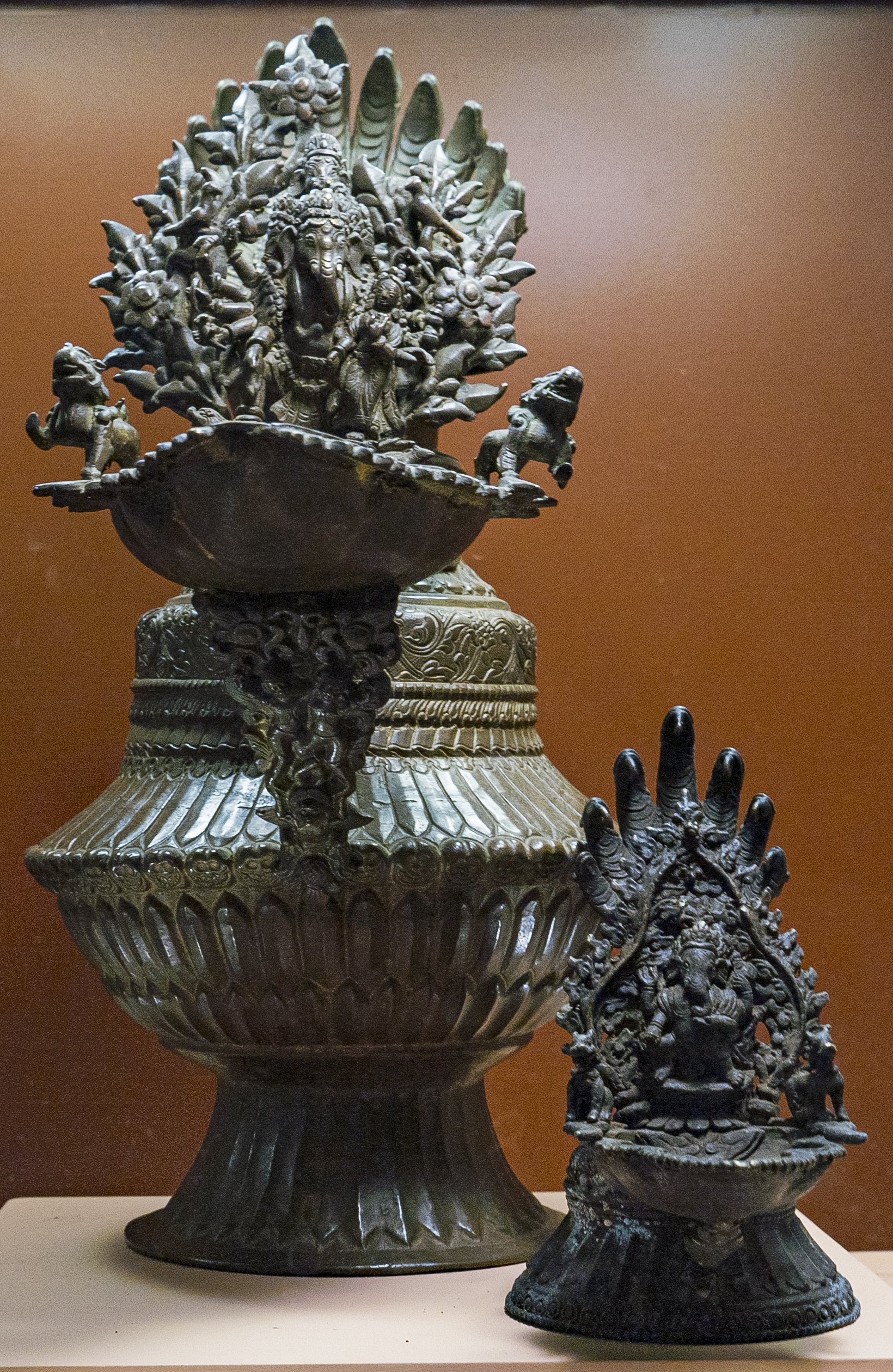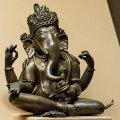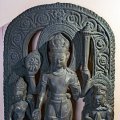Patan Museum (Nepal): photo 170
Photo 170 of 212 in Gallery: Patan Museum (Nepal)

Image title: Oil Lamps (Nepal, 17th century)
Description of the photo
This Bronze sculpture shows an image of various Oil Lamps, from the 17th/18th century origination from Nepal.—Materials used: Bronze, traces of gilt (2).
Description: Pitcher-shaped lamps such as these are called sukunda or dipa bhanda and represent Surya, the sun god, as witness to all sacred ceremonies. Oil-soaked cotton wicks bum in the projecting cup and the flame is kept fed by oil ladled from the body of the lamp. The flame is protected by lions and burns before an image of Ganesha. Lord of the Sacred Lamp. As destroyer (and maker) of obstacles, his blessing is necessary to ensure successful performance of the ritual.
On the handle of the larger of these two there is an image of Vishnu seated on Garuda protected by an eleven-headed serpent, itself sacred. Upon it crawls the god Krishna as a mischievous baby holding a pilfered butterball. Beneath the lamp cup are a pair of unidentified figures supported by Garuda, Vishnu’s mount the sunbird. The lamp is also adorned with a variety of vegetative and geometric motifs and encircled with a garland of surprisingly jolly looking human skulls,
Gallery information:
The Patan Museum is located on the Durbar square of Patan (Lalitpur/Lalitapura, Kathmandu, Nepal) which is associated Keshav Narayan Chowk (Keshavnarayan)—a form of Lord Vishnu. Being listed as a World Heritage Site, the whole of Durbar square is filled with exquisite temples, sculptures and other ancient structures, of which the ancient history history can be traced to the Malla Kings of Lalitpur. It is an important site for both Buddhism and Hinduism.
Photo details:
Date: 2019-12-02
Camera: SONY ILCE-6400
Exposure: 1/15
Aperture: f/5
ISO: 100
Focal length: 18mm
High resolution:
Download file
Size: 2.52 MB
Resolution: 1640 x 2520
© Photograph by Gabe Hiemstra.
License: CC BY-NC-ND 4.0

